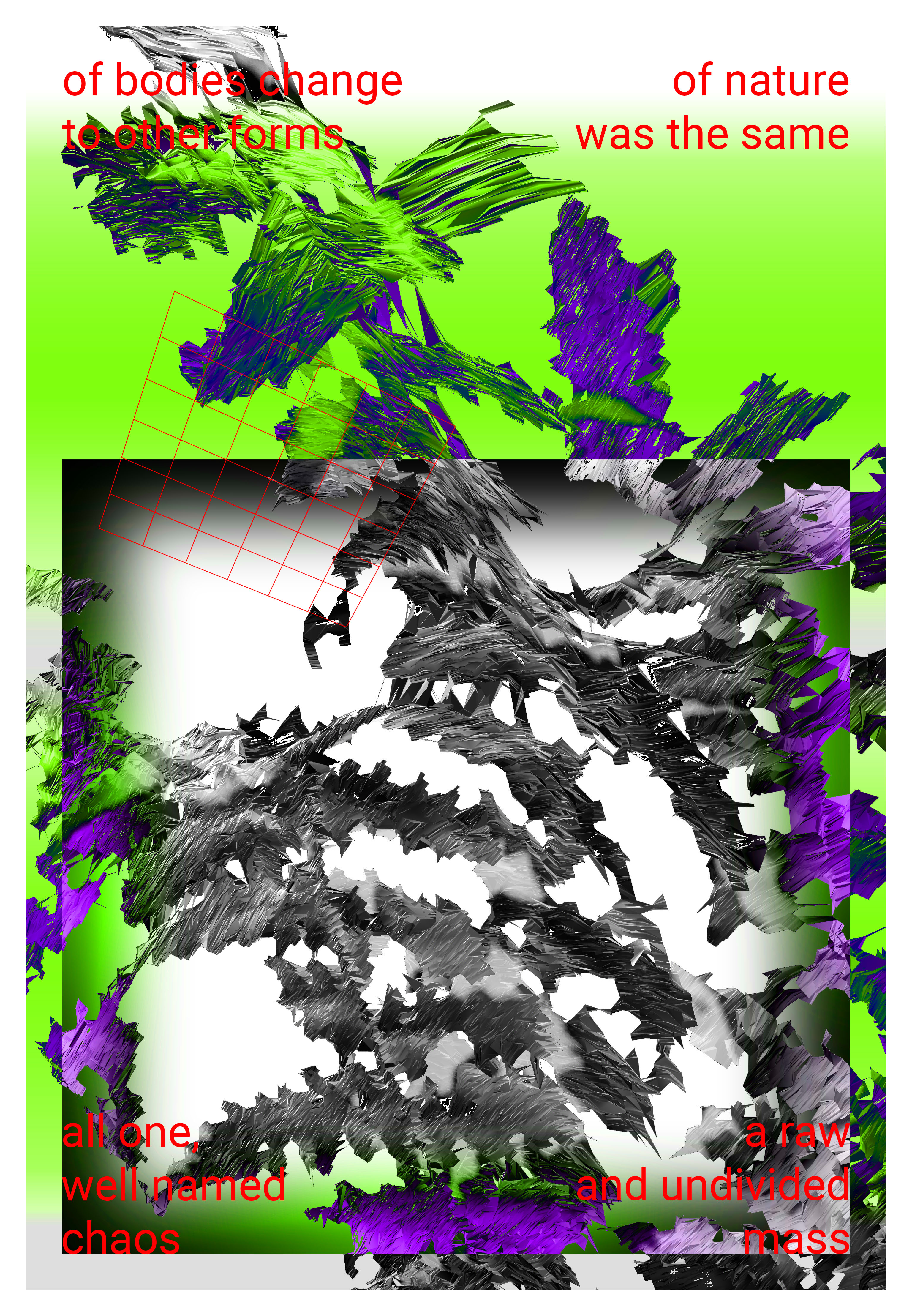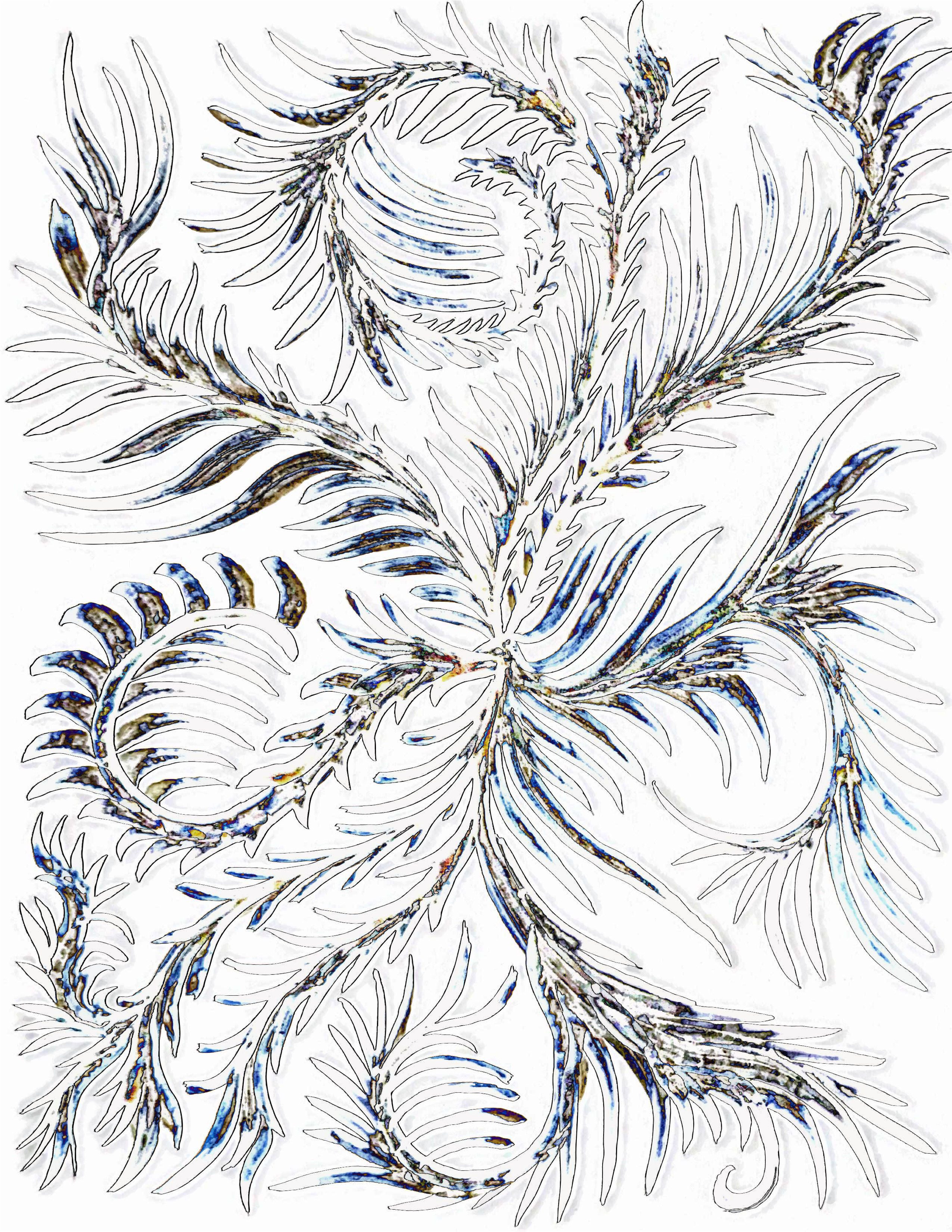

16 OFF-SCRIPT
TRAVESS SMALLEY︎︎︎
I feel like my definition of image is very broad. I often mislabel a photograph, a digital photograph, a rendering in blender, a scan, a drawing, a digital drawing, a painting or a digital painting. I refer to all them as images or I start to use their names interchangeably. I don't particularly care about those labels. I appreciate that each of these types images have various characteristics that can be manipulated or obfuscated to try and change how the viewer reads them.
The self published books started out as a project to just get the images off of my screen and into some physical form. I have a different editing process when I'm looking through a book of images as opposed to a folder on my computer or in photo organization software. With a book there's a speed of page flipping, relating distant pages quickly. It's a different way of relating to images than in a thumbnail grid.
Cut pages out, photograph the page, use them for a collage, scan them in, print them out again.
I'm also just interested in digital printing. I like inspecting that translation from vector or raster into a laser print, inkjet, or offset. I like seeing the print tone, the toner burn, the raised ink. For a while I was recording everything I did in Photoshop as Actions. These are simple little scripts that allow you to repeat the same series of commands on a batch of images. These experimentations lead me to discover other scripting tools in Illustrator, InDesign, and the Mac OS. Using AppleScript I was able to orchestrate actions in Illustrator to generate vector drawings then manipulate those drawings in Photoshop then layout all the drawings in InDesign as a book that is uploaded to Lulu's server and printed as a book. All I had to do was press play.
Discreet Music
I want to share the back album cover for![]() . The album that is often credited as the beginning of Ambient Music. I like it because it not only highlights a looping processes (the synthesizer going repeatedly through a tape delay) but also because it's generative system (you can start with any two sounds and get a different response depending on the change in speed and pitch).
. The album that is often credited as the beginning of Ambient Music. I like it because it not only highlights a looping processes (the synthesizer going repeatedly through a tape delay) but also because it's generative system (you can start with any two sounds and get a different response depending on the change in speed and pitch).
![]()
For the last year I've been working on a series of brush drawings with colored ink on paper. They look like floral ornaments, decorative shrubs, ferns. Decoratives Ferns are generated with a fairly simple set of drawing rules, something akin to a drunken l-system. All lines bend off of each other, aiming to never branch at more than a 90 degrees angle, the first few lines are page filling, after that smaller lines are made to fill in the rest of the page. The final page should be somewhere between 10 - 50% covered in ink. They usually feel flat.
The drawings are then photographed on my phone using TurboScan or Scanner Pro (two iOS document scanning apps) and processed as both a vector image and a raster image. The vector and raster images are inverted and overlaid on top of each other so that all that's left is the differences between the two different digital versions. The results are an outline, a kind of ghost of digital photographic processes with the residue of a hand rendered line.
TRAVESS SMALLEY︎︎︎ is a New York based artist concerned with the image politics of a post-internet world, often by mining psychedelia and reintroducing it into new situations of abstract mediation.
I feel like my definition of image is very broad. I often mislabel a photograph, a digital photograph, a rendering in blender, a scan, a drawing, a digital drawing, a painting or a digital painting. I refer to all them as images or I start to use their names interchangeably. I don't particularly care about those labels. I appreciate that each of these types images have various characteristics that can be manipulated or obfuscated to try and change how the viewer reads them.
The self published books started out as a project to just get the images off of my screen and into some physical form. I have a different editing process when I'm looking through a book of images as opposed to a folder on my computer or in photo organization software. With a book there's a speed of page flipping, relating distant pages quickly. It's a different way of relating to images than in a thumbnail grid.
Cut pages out, photograph the page, use them for a collage, scan them in, print them out again.
I'm also just interested in digital printing. I like inspecting that translation from vector or raster into a laser print, inkjet, or offset. I like seeing the print tone, the toner burn, the raised ink. For a while I was recording everything I did in Photoshop as Actions. These are simple little scripts that allow you to repeat the same series of commands on a batch of images. These experimentations lead me to discover other scripting tools in Illustrator, InDesign, and the Mac OS. Using AppleScript I was able to orchestrate actions in Illustrator to generate vector drawings then manipulate those drawings in Photoshop then layout all the drawings in InDesign as a book that is uploaded to Lulu's server and printed as a book. All I had to do was press play.
Discreet Music
I want to share the back album cover for
Brian Eno's - Discreet Music from 1975

Decorative Ferns

For the last year I've been working on a series of brush drawings with colored ink on paper. They look like floral ornaments, decorative shrubs, ferns. Decoratives Ferns are generated with a fairly simple set of drawing rules, something akin to a drunken l-system. All lines bend off of each other, aiming to never branch at more than a 90 degrees angle, the first few lines are page filling, after that smaller lines are made to fill in the rest of the page. The final page should be somewhere between 10 - 50% covered in ink. They usually feel flat.
The drawings are then photographed on my phone using TurboScan or Scanner Pro (two iOS document scanning apps) and processed as both a vector image and a raster image. The vector and raster images are inverted and overlaid on top of each other so that all that's left is the differences between the two different digital versions. The results are an outline, a kind of ghost of digital photographic processes with the residue of a hand rendered line.
TRAVESS SMALLEY︎︎︎ is a New York based artist concerned with the image politics of a post-internet world, often by mining psychedelia and reintroducing it into new situations of abstract mediation.